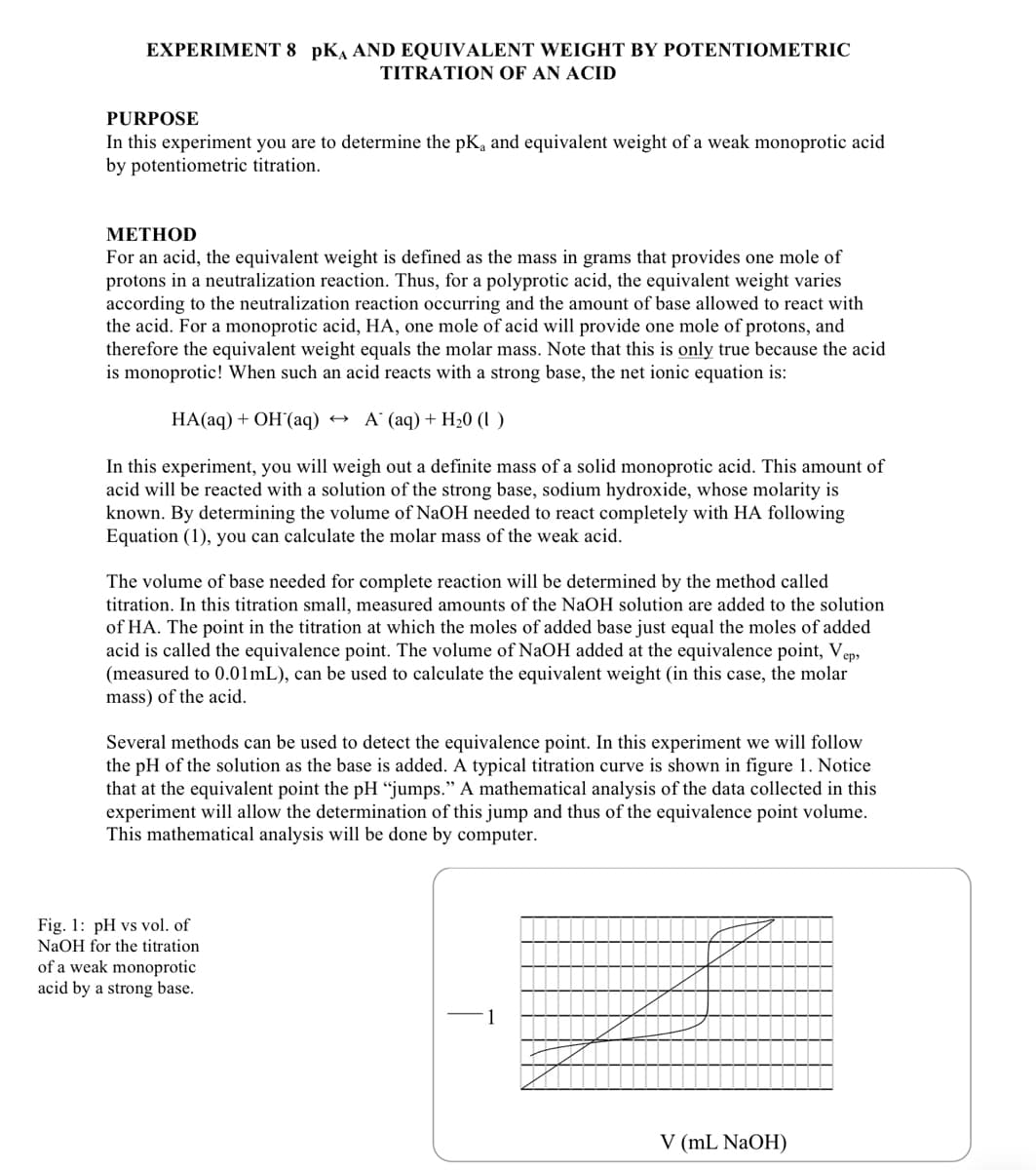States of Matter
The substance that constitutes everything in the universe is known as matter. Matter comprises atoms which in turn are composed of electrons, protons, and neutrons. Different atoms combine together to give rise to molecules that act as a foundation for all kinds of substances. There are five states of matter based on their energies of attraction, namely solid, liquid, gases, plasma, and BEC (Bose-Einstein condensates).
Chemical Reactions and Equations
When a chemical species is transformed into another chemical species it is said to have undergone a chemical reaction. It consists of breaking existing bonds and forming new bonds by changing the position of electrons. These reactions are best explained using a chemical equation.

![The pKa of the acid can also be deduced from the titration data. Ka, the acid dissociation constant,
is the equilibrium constant for the dissociation of the acid in water.
HA(aq) + H20 (1) H30* (aq) + A¯ (aq)
(1)
Ka=
[H30+][A]
[HA]
The pKa of the acid is the negative of the base 10 logarithm of the Ka.
pKa = -log10 Ka
(2)
(3)
The pH of a solution of a weak acid is related to the pK of the acid by the equation:
[A]
pH = pKa + log[HA]
(4)
In a solution for which [A] = [HA], pH = pKa [Can you derive this from equation (4)?] In this
experiment, OH¯ equal one-half the equivalents of HA initially present, [A] = [HA] and thus pH
= pKa [This point in the titration is known as the buffer point; the position of the buffer point in
the titration curve is shown on Figure 1.] The volume needed to reach the buffer point, Vbp,, will
be one-half that needed to reach the equivalence point.
Vbp = 1/2 Vep
(5)
In summary, the titration will be performed and data collected for pH versus volume of NaOH
added. By a mathematical analysis of the titration curve, the equivalence point volume will be
identified. From this volume, the equivalent weight can be calculated. Again by mathematical
analysis, the pH at the buffer point will be determined. This is a measure of pKa of the acid.](/v2/_next/image?url=https%3A%2F%2Fcontent.bartleby.com%2Fqna-images%2Fquestion%2Fdab67aeb-c4d9-43f7-88d0-dfd6e7af2d5d%2Fe91e2790-1870-42a1-97ec-292d97c930fd%2Fibg39ra_processed.jpeg&w=3840&q=75)
Trending now
This is a popular solution!
Step by step
Solved in 4 steps with 29 images








